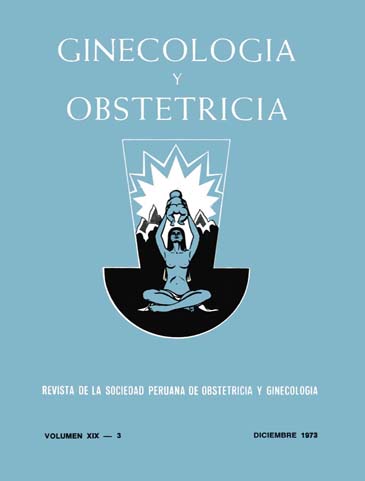Forceps: Management in the Hospital Cayetano Heredia
DOI:
https://doi.org/10.31403/rpgo.v19i761Abstract
In 3,767 births in the Cayetano Heredia Hospital it has made forceps delivery in 520 patients. Of these, 300 corresponded to maternal or fetal or maternal-fetal and forceps 220 elective indications. The following complications in the mother met: soft tissue trauma or neurological disorder neighborhood; both have been of limited extent and severity and outcome was favorable. Puerperal evolution showed anemia (41.7%) and puerperal infection (11.2% of uterus and 5% episiotomy); however, it is necessary to clarify that these complications have occurred almost simultaneously in patients with spontaneous labor who were seen in the same period. 445 has been revised pediatric medical records, showing a high percentage of complications which may be attributed to the use of forceps (20.4%); a percentage that reaches 5% or 22 children, presented hypoxia at birth; children subsequently recovered with treatment. Trauma to the newborn, such as skin lesion or scalp and facial paralysis, point to forceps to cause injury; other likely consequences would be attributed to forceps changes in cranial configuration and intracranial hemorrhage. The forceps has been a useful tool for solving complications in the second stage of labor instrument; it can be considered that their use is irreplaceable; however it is axiomatic accept that it is a useful instrument when the usage requirements are not met.Downloads
Download data is not yet available.
Downloads
Published
2015-06-03
How to Cite
Figueroa Aragón, M., Gonzáles del Riego, M., Gonzáles E., R., Meléndez C., R., Paredes R., C., & Karl A., E. (2015). Forceps: Management in the Hospital Cayetano Heredia. The Peruvian Journal of Gynecology and Obstetrics, 19(3), 107–116. https://doi.org/10.31403/rpgo.v19i761
Issue
Section
Artículos Originales
















